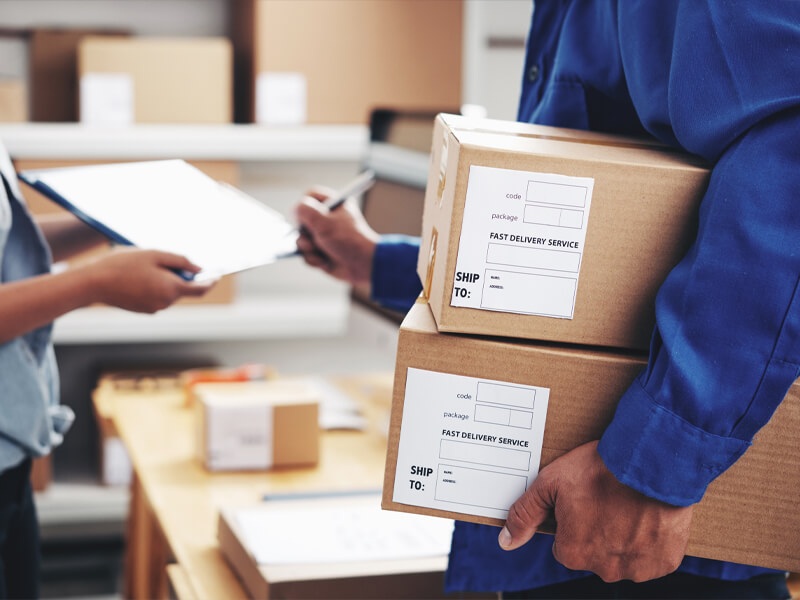Ideal Security: Industrial Packaging Solutions Tailored for Success
Ideal Security: Industrial Packaging Solutions Tailored for Success
Blog Article
Reliable Industrial Recycling Solutions for Lasting Packaging: A Comprehensive Guide
That's where this extensive overview on efficient industrial recycling remedies for sustainable packaging comes in. By discovering essential areas such as product packaging material selection, making for recyclability, carrying out recycling infrastructure, collaborating with reusing partners, and tracking and measuring reusing success, this overview will equip you with the knowledge and tools essential to make educated choices and drive favorable change within your company. Whether you're a product packaging professional, sustainability supervisor, or just interested in the topic, this guide will certainly offer valuable understandings and techniques to assist you navigate the world of lasting packaging.
Product Packaging Material Selection
The selection of packaging materials plays an important duty in guaranteeing the sustainability of industrial recycling services. When it pertains to lasting product packaging, the selection of products is type in minimizing ecological impact and taking full advantage of recycling effectiveness. Choosing the appropriate products can aid lower waste generation, conserve resources, and advertise a round economic climate.
Products like cardboard, paper, glass, and certain types of plastics can be recycled numerous times without shedding their high quality. On the other hand, products that are challenging to reuse, such as combined plastics or non-recyclable compounds, can produce obstacles for the reusing procedure and might finish up in incinerators or land fills.
An additional consideration is making use of naturally degradable and eco-friendly materials. Product packaging made from renewable energies, such as plant-based plastics or biopolymers, can help in reducing dependency on nonrenewable fuel sources and reduce environment modification. Additionally, eco-friendly products damage down normally in time, minimizing the buildup of waste in garbage dumps.
Furthermore, the weight and quantity of packaging materials must be reduced to reduce transportation expenses and power usage. Light-weight products not only require fewer resources throughout manufacturing yet also contribute to reduce carbon discharges throughout transport.
Creating for Recyclability
Product packaging developers must prioritize the use of products that are extensively approved for recycling and have developed reusing facilities. Materials such as glass, aluminum, and specific types of plastic, like PET and HDPE, are commonly reused and must be chosen over materials that are expensive or challenging to reuse.
An additional crucial factor to consider in creating for recyclability is the elimination of unnecessary parts or materials. By reducing the number of layers, finishings, and extra elements, product packaging can be made less complex and less complicated to recycle. Furthermore, designers ought to intend to minimize making use of combined products, as they can make complex the recycling procedure.

Implementing Recycling Framework
Efficient implementation of recycling facilities is essential for the success of commercial recycling services. Without appropriate facilities in place, the recycling procedure comes to be inefficient and inadequate, hindering the overall goal of lasting packaging.
To implement recycling framework efficiently, a number of key aspects need to be considered. There ought to be an efficient collection system that facilitates the splitting up and collection of recyclable materials. This can consist of marked recycling bins in public spaces, along with collaborations with waste management companies for curbside pickup and sorting.
As soon as accumulated, the recyclable products need to be delivered to recycling facilities in a timely way. This needs reliable logistics and transport networks, ensuring that the products reach the appropriate facilities immediately.
At the recycling centers, progressed sorting and processing technologies must be in area to divide various sorts of materials efficiently. This consists of making use of automated arranging makers, optical scanners, and manual sorting techniques.
Furthermore, there ought to be a durable market need for recycled materials. This can be attained via cooperations with makers and markets that make use of recycled materials in their production procedures. Producing a stable market for recycled products incentivizes the recycling sector and promotes the round economic situation.
Working Together With Recycling Partners

One key facet of collaborating with recycling companions is the facility of clear communication channels. It is very important to establish open lines of communication to promote the exchange of info, updates, and feedback. This allows both events to remain notified regarding the development of recycling initiatives and resolve any type of obstacles or problems that may emerge.
In addition, collaboration can entail collaborations in carrying out and developing recycling programs. Recycling companions can give useful insights and advice in creating efficient collection systems and identifying the most ideal recycling modern technologies. By working together, services and reusing companions can maximize the recycling procedure and minimize waste.
Furthermore, partnership can expand beyond the operational elements of reusing. It can likewise encompass advocacy and education efforts. By joining pressures, services and recycling partners can increase recognition regarding the relevance of reusing and promote the fostering of sustainable product packaging techniques amongst customers and various other stakeholders.
Tracking and Measuring Recycling Success
To guarantee the effectiveness of commercial recycling solutions and the success of lasting product packaging objectives, it is crucial for organizations and their reusing partners to develop a comprehensive system for monitoring and gauging recycling success (plastic container manufacturer). Gauging and tracking recycling success enables organizations to evaluate the effect of their recycling efforts, identify areas for renovation, and set meaningful targets for future development
One method to Related Site track recycling success is through the usage of data collection and analysis devices. By collecting data on the quantity of product packaging waste produced, the percentage of waste that is recycled, and the sorts of products being recycled, companies can acquire beneficial understandings right into their recycling performance. This information can then be assessed to identify fads, patterns, and locations of inadequacy.
Another vital aspect of monitoring and determining reusing success is developing standardized and clear metrics. This enables services to compare their performance versus industry standards and track their development in time. Metrics such as reusing prices, waste diversion rates, and greenhouse gas discharges can give a quantitative measure of a service's reusing success.

Final Thought
In conclusion, carrying out reliable commercial recycling solutions for sustainable packaging calls for mindful factor to consider of packaging product selection, designing for recyclability, executing reusing infrastructure, working together with recycling companions, and monitoring and determining reusing success. By including these practices, businesses can add to a much more environmentally-friendly and lasting technique to packaging, minimizing waste and advertising the round economy.
By checking out crucial locations such as product packaging material option, developing for recyclability, applying recycling framework, collaborating with reusing partners, and monitoring and gauging recycling success, this guide will certainly furnish you with the knowledge and tools needed to make educated decisions and drive positive modification within your organization. Packaging developers ought to prioritize the usage of materials that are commonly approved for reusing and have developed recycling frameworks.Partnership with reusing companions is vital for the successful execution of industrial recycling hop over to these guys services and the accomplishment of lasting product packaging objectives. By joining pressures, companies and recycling partners can raise awareness concerning the value of reusing and promote the fostering of lasting packaging practices among consumers and other stakeholders.
By accumulating data on the quantity of product packaging waste produced, the percent of waste that is recycled, and the kinds of products being recycled, businesses can obtain beneficial insights right into their recycling efficiency.
Report this page